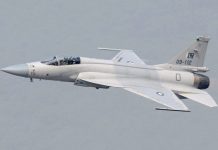ISLAMABAD: Pakistan on track to achieving sustainable economic growth, WealthPK reported on Saturday.
Pakistan’s economic indicators are showing signs of improvement, demonstrating that the economy is on track to attaining stronger growth as a result of the government’s prudent measures.
Pakistan stays on a higher growth trajectory, according to the Monthly Economic Update & Outlook for December 2021-22 by the ministry of finance, accelerating from the growth rate seen in the fiscal year 2020-21, according to WealthPK.
The Monthly Economic Indicator (MEI) is calculated by merging monthly data from associated indicators with GDP at constant prices. According to the average monthly economic indicator for the first five months of the current fiscal year (2021-22), Pakistan’s average economic (GDP) growth stayed around 5%.
This is due to positive macroeconomic high-frequency indicators, including growth in large-scale manufacturing, which is known to have substantial multiplier effects in the services sector, recovery in Pakistan’s key trading partners, and a robust rise in capital goods imports.
Rebounding exports suggest that the real GDP growth returned to 3.5% in FY2021, after shrinking by 0.5% in FY2020 with the outbreak of the Covid-19 pandemic, according to the World Bank’s Pakistan Development Update for the month of October.
As per the latest estimates by the Pakistan Bureau of Statistics (PBS), total exports in November 2021 were $2,903 million (provisional), up from $2,464 million (provisional) in October 2021, representing a 17.82% and a 33.72% increase over $2,171 million in November 2020.
The high export performance is due to the fact that the cyclical situation of the major trading partners (as measured by the Composite Leading Indicators (CLI) provided by OECD) appears to be stabilising.
The underlying growth trend in those countries remains quite robust as a result of a rebound in their potential output growth, WealthPK reported.
In terms of imports, the PBS estimates show that overall imports for the month of November 2021 were $7,928 million (provisional), up from $6,369 million (provisional) in October 2021, a 24.48% and 84.72% increase over $4,292 million in November 2020.
The industrial sector is strongly reliant on imports of raw materials and machinery, which has resulted in a surge in imports.
Imports, on the other hand, have expanded much faster than exports as a result of stronger domestic demand. Pakistan has to increase private investments and exports in order to maintain sustainable economic growth.
High effective import tariff rates, restricted availability of long-term financing for enterprises to increase export capacity, poor supply of market intelligence services for exporters, and low productivity of Pakistani firms are major contributors to the country’s continuing trade deficit.
To control the persistent increase in imports, the government continues to take steps to reduce unnecessary imports and provide domestic alternatives in some areas, particularly in the food sector.
During this period, the fiscal deficit remained at Rs587 billion, coming down from Rs775 billion reported during the same time of the previous year. Moreover, foreign investment also increased to $455.5 million in the July-November 2021 period.
This confirms the government’s commitment to striking a balance between budgetary deficits caused by Covid-19 pandemic and economic growth, maintaining a sustainable primary balance, and preserving social expenditures.
The overall economic indicators show that Pakistan is on a fast track to achieving sustainable economic growth.
However, at the same time it is subjected to chronic inflationary pressures exacerbated by the extraordinary rise in international commodity prices. There is also a need to control the devaluation of the currency to prevent a balance of payments crisis. -INP






